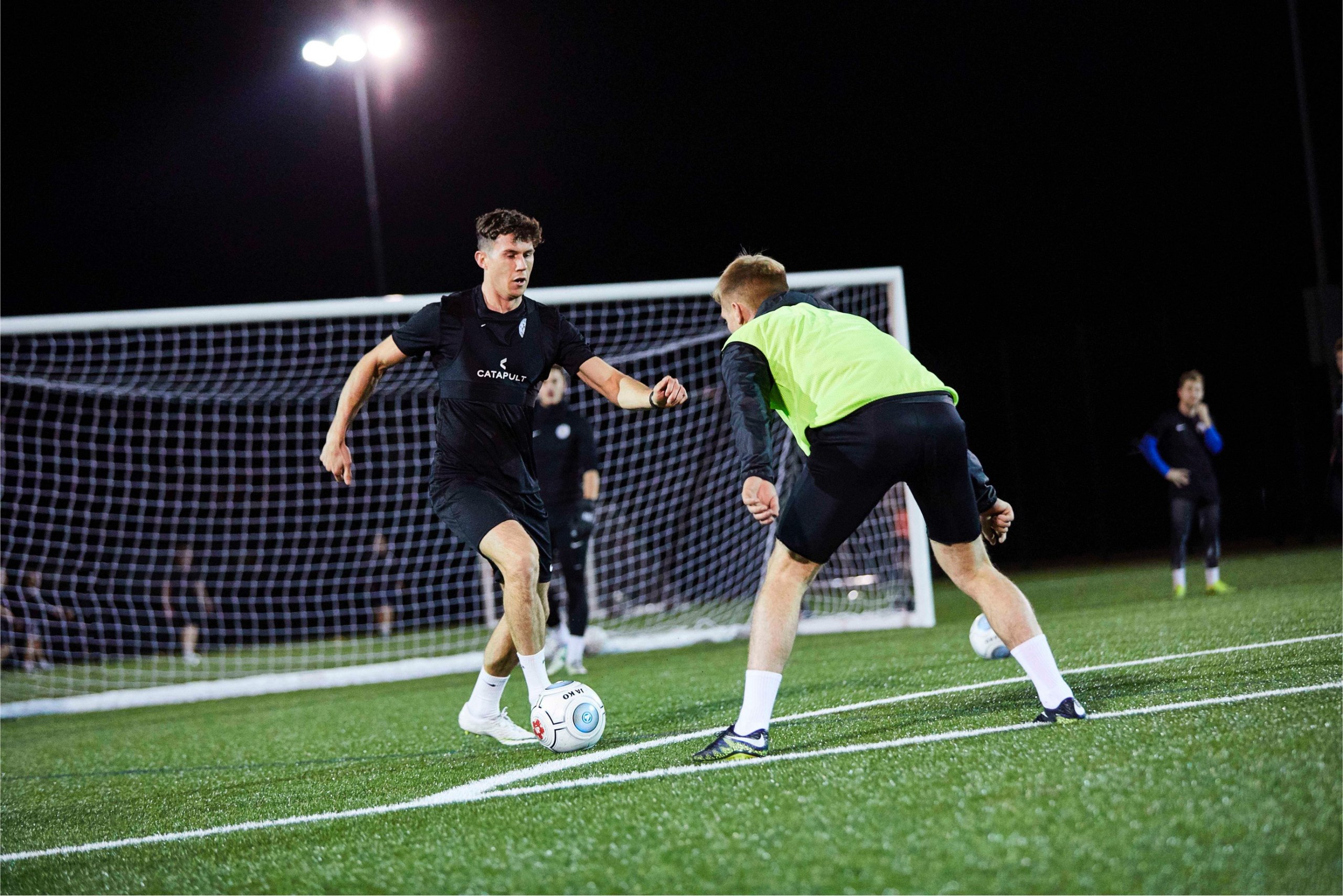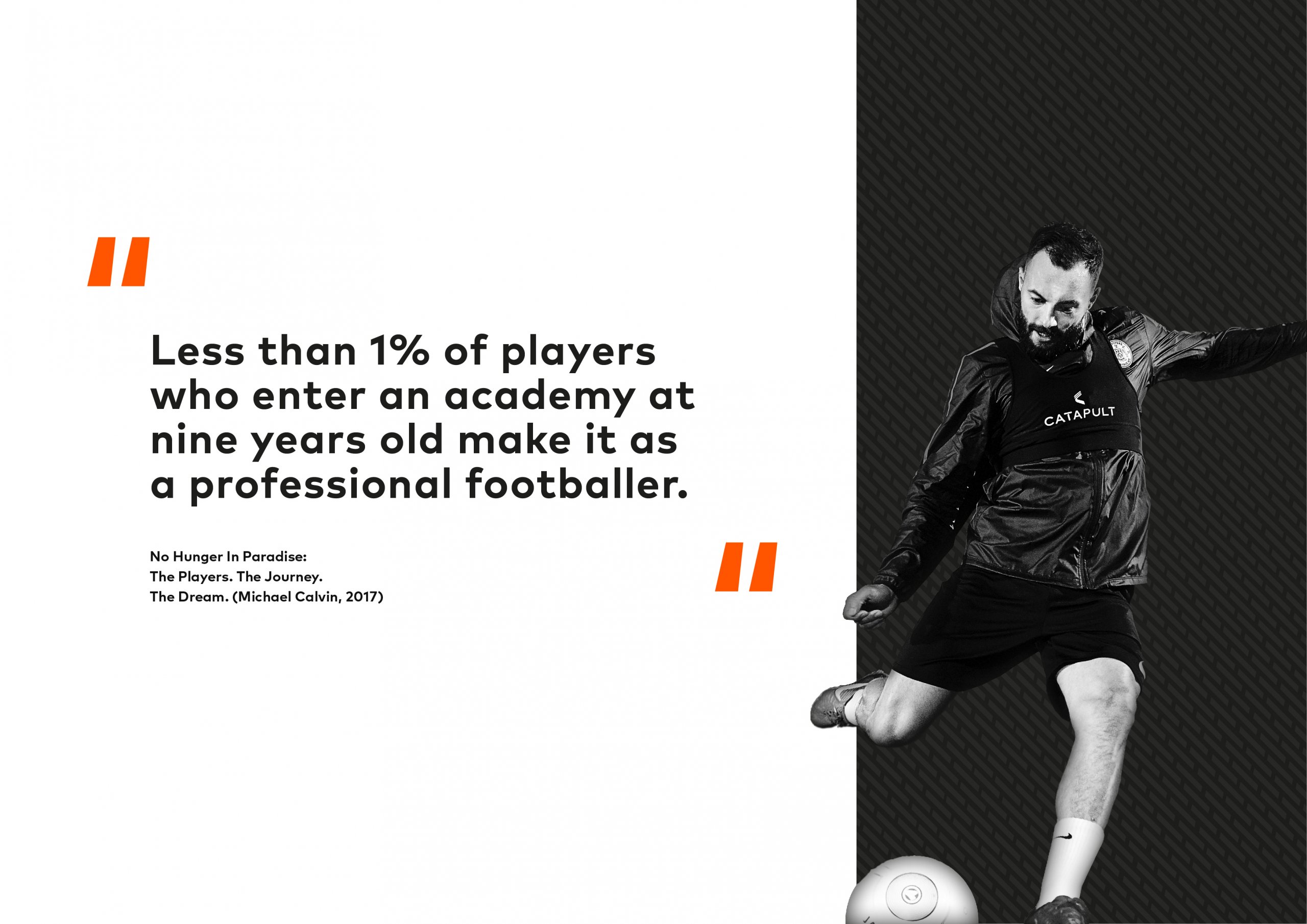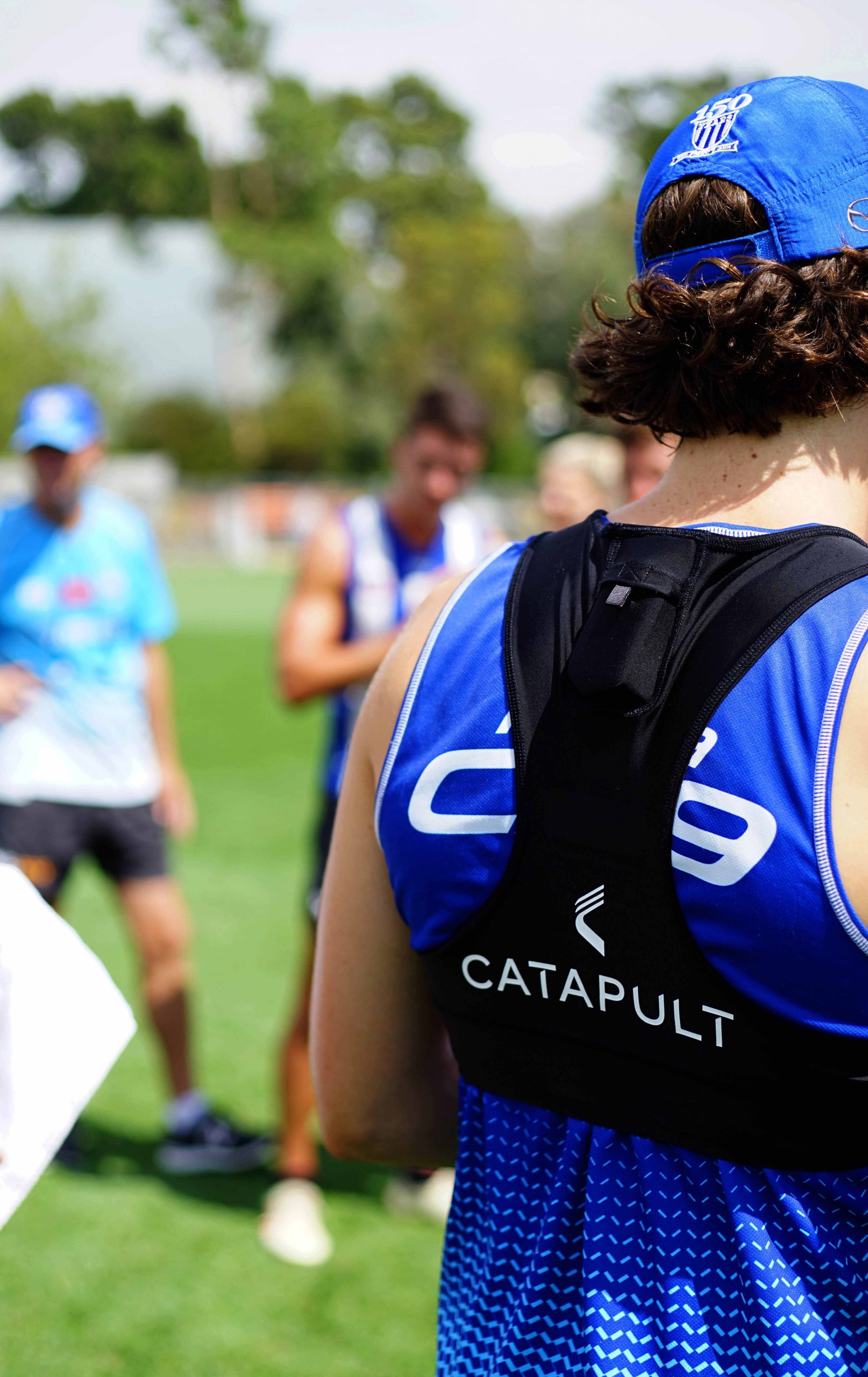Generating ROI on Athlete Monitoring Technologies
Generating ROI with athlete monitoring technologies:
- Talent identification
- Injury risk reduction
- Improved communication & data management
- Fan engagement

—> Download our free eBook: Generating Return on Investment on Athlete Monitoring Technologies.
Talent Identification
A strategic priority for many elite clubs is to build an academy that produces players who are equipped to make the jump into the professional game. However, with less than 1% of players who enter an academy at nine years old making it as a professional footballer, it is evident that finding and nurturing sporting talent can be a complicated and difficult process.
In a field as challenging as talent identification, it is vital that clubs equip themselves with tools that give them a better chance of succeeding in sourcing the right talent for their academies. By investing in athlete monitoring systems, teams give themselves access to a wealth of objective performance data that can inform important recruitment, selection and succession planning decisions.
Once a team has established performance benchmarks among its squads, it becomes possible to quantify the physical demands of the sport at different levels and for different positions.
This type of work enables organisations to map their academy prospects against senior players and ensure that their loading is appropriate at a vital time in their development.
Comparisons of this nature can help coaches and sports scientists to better understand what stage their young athletes are at and identify those who may be ready to step up to the senior level, or those who may need extra work to make the grade.
“(With Catapult) we’re able to compare our players to the best footballers in the country, so it gives them a real appreciation and understanding of what it takes to play at the highest level,” says Lee Tucker, Project Lead and Head of Recruitment at the V9 Academy. “They can see how big or small the gap is for them between the level they’re at and the top level.”
“When our players see their data and compare to a Championship player or maybe a League Two player, then they can see what they really have to achieve,” says Curtis Fleming, a V9 Academy coach. “The data gives them a foundation to know a lot more about themselves.”
In addition to quantifying performance and game demands, familiarising young athletes with data analysis can also have educational benefits, ensuring that they are comfortable with monitoring systems and certain key metrics before they reach the senior level.
“Having the Catapult units with us has helped in a number of different ways,” says Aaron Webb, Academy Manager at the BNZ Crusaders. “I think one of the key things we’ve really experienced has been trying to grow our athletes to understand the metrics that are going to be measured when they get to the professional level.
“Having the units within our programme has enabled us to teach the young athletes what it is that is going to be measured now, but also what is going to be measured when they are going to be playing professional rugby.”
As clubs look to improve the efficiency of their talent pathways while preparing young athletes for the demands of the professional game, athlete monitoring technologies are now well established as a key component of successful talent development infrastructures.
These conversations are opportunities for sports scientists and coaches to help their athletes better understand the meaning and application of key performance metrics. This educational process can in turn lead to improved training practice and encourage athletes to improve their self-management.
—> Download our free eBook: Generating Return on Investment on Athlete Monitoring Technologies.

Injury Risk Reduction
One of the key functions of athlete monitoring technologies is helping organisations to use performance data to reduce injury risk among their athletes. As many sports become increasingly physically demanding, it can be challenging to maintain high rates of player availability and ensure that your team is operating either at or close to its optimum level.
According to the BBC, the cost of injuries to Premier League clubs rose from £176.6m to £217m (an increase of 21%) between the 2015/16 and 16/17 seasons. Insurance broker JLT Speciality calculated that the average cost of an injury in the Premier League was £323,000 in player wages, a significant inefficiency in the application of clubs’ financial resources.
By monitoring athletes and developing individual and squad databases over time, coaches can reach an enhanced, objective understanding of the physiology of their players. As part of this process, it becomes possible to identify ‘red flags’ that are associated with increased risk of injury.
Once these warning signs have been established, staff can make interventions to reduce or remove that risk, a policy that can lead to improved athlete availability, reduced costs, and a significant return on investment over the course of a season.
While it would be inaccurate to claim that athlete monitoring technologies can eliminate soft tissue injuries, the data they provide can be used to identify high-risk situations and protect athletes from those scenarios (and thereby reduce injury risk) wherever possible.
“What we’re trying to do is lower risk, and that risk is never zero,” says Dr. David Opar, researcher with Australian Catholic University’s hamstring injury research group. “But I think people have appreciated that there might be certain factors that you might be able to target, and across the squad you might be able to lower the risk of injury in that group.
“Clearly there’s been a lot of work looking at eccentric exercise and a greater appreciation of how important that is. I think in more recent times there’s also been a greater appreciation for the exposure to max velocity running within a week or within a season. I think those are the two major things that have helped towards mitigating the rate (of injuries) because they’re actually looking at mitigating the risk of injury.”
Once clubs have established a solid foundation of data and identified risk factors in games and training, they can start to implement processes that systematically reduce injury risk and improve player availability.
Given that players are any sports team’s most valuable assets, it make sense to do everything possible to protect them from anything that could stop them performing at their best. The intelligent application of performance data is essential to this process, maximising the return a club gets on its investment in its players, enabling those athletes to deliver more value on the field and increasing their potential future resale value.
—> Download our free eBook: Generating Return on Investment on Athlete Monitoring Technologies.

Improved Communication and Data Management
Clear and efficient communication is central to the success of any sporting organisation. In what is a fast-paced and competitive environment, it is vital to establish strong lines of communication across departments and between coaching staff and athletes.
When it comes to coach-athlete communication, brevity and clarity are paramount; coaches constantly need to be able to distill information into messages that are easy for athletes to digest and apply to their performance on the field. Similarly, sports scientists are required synthesise huge amounts of data into actionable insights that coaches can build into training schedules and tactical planning.
The use of athlete monitoring technology can be a major component of the communication process.
From the presentation of performance insights, to justifying training plans and selection decisions, the ability to source actionable insights and support judgments with objective data is imperative and delivers value that goes far beyond on-field performance.
Athlete management systems are also crucial element of this process. It’s easy to fall into the habit of storing data in silos (thereby limiting its effectiveness), but management platforms that centralise information and improve the ease with which it is communicated can transform the way insights are discussed and acted upon across departments.
“One of the challenges involved with running a sports science department is managing the different data sources that keep track of the physical condition of our players,” says Dale Reese, Medical & Performance Coordinator for the Swedish National Team. “Athlete management systems make our life easier in that regard by providing a valuable overview of that data, as well as being a repository for additional measures – both objective and subjective – that can enhance our performance and training decisions.”
The sports science department at Atlético Paranaense, one of the biggest teams in Brazil, appreciates the importance of communication in educating others around the application of athlete monitoring technologies. Managed by Lead Physiologist André Fornaziero, the club’s sports scientists work closely with coaches to help them better understand the relevance of key metrics and insights.
“We show the coaches some rankings of the training drills that produce the most IMA, top speed distance, or total distance covered,” says Fornaziero. “These classifications help them to better understand how to use the GPS, analyse the loads involved with their training plans, and to plan for the next session.”
That communication process doesn’t stop with the senior team. In order to improve the way data is relayed and understood throughout the club, Fornaziero and his staff hold regular education meetings to inform all coaches on key topics and help them to better communicate performance information to their various squads.
“We run education sessions with all the staff, starting at U14 level and going all the way up to the first team,” says Fornaziero. “The sessions show them what GPS analysis is, the metrics that we analyse, and explain the differences between accelerometer data and GPS data.”
By using monitoring systems and athlete management tools as both practical and educational supports, clubs can empower staff with the knowledge required to maximise the performance benefits of the technology and improve the delivery of data-driven feedback.
—> Download our free eBook: Generating Return on Investment on Athlete Monitoring Technologies.
Fan Engagement
In a digital world, sports teams are expected to connect with their fans across multiple platforms and continually find new ways to deliver engaging content to their supporters. Huge numbers of clubs have already risen to this challenge and are constantly innovating to drive new conversations and fan experiences.
As these initiatives have developed, performance data has emerged as a popular way to keep fans engaged online. Despite initially using athlete monitoring technologies for purely performance-related purposes, a growing number of clubs are now finding the data to be a useful tool as they strive to connect fans with their brand.
“What we hear from our fans is that there is just an insatiable desire for knowledge around stats,” says Hamish Riach, Chief Executive of the BNZ Crusaders. “We see the Catapult software helping us to get some detail that we know will impress and interest our fans, and so as we start to share some of that information with them, we can get a deeper connection with our fans.
“Our fan engagement – the way they feel about the Crusaders and about their own rugby knowledge – just continues to grow with us,” says Riach. “That connection has a whole host of rewards around our fan base and how they want to continue to be fans.”
As would be expected, broadcasters have been at the forefront of many of the recent advances in fan engagement as they collaborate with teams and leagues to deliver immersive experiences to viewers at home.
For example, Catapult has worked closely with Channel 9 in Australia over recent seasons to bring real-time performance data to viewers of the NRL State of Origin series across broadcast and digital media.
Feeding live physical and positional data from the players’ monitoring devices directly to the Channel 9 broadcast team, the project has presented fans with real-time information that illustrates the physical demands of elite rugby league.
“The data we display takes the audience deeper into the inner sanctum of what’s available to players and coaches during a match,” says Ben Clark, Executive Producer of Nine NRL. “It gives everyone watching a greater understanding of what it takes to play rugby league at the ultimate level.”
By bringing fans closer to the athletes in this way, clubs and organisations are able to take supporters ‘behind the curtain’ by sharing an extra layer of detail beyond a fan’s typical experience. As sports data and statistics become more mainstream among increasingly data-literate fanbases, this type of content is proving to be highly valuable for teams looking to engage with supporters in novel ways across multiple platforms.
As these type of digital initiatives continue to advance, performance data is becoming a fundamental pillar of strong fan engagement strategies. If your organisation is looking for new ways to deliver valuable experiences to supporters, then why not consider how your athlete monitoring systems can deliver further ROI by supporting the creation of genuinely innovative content?